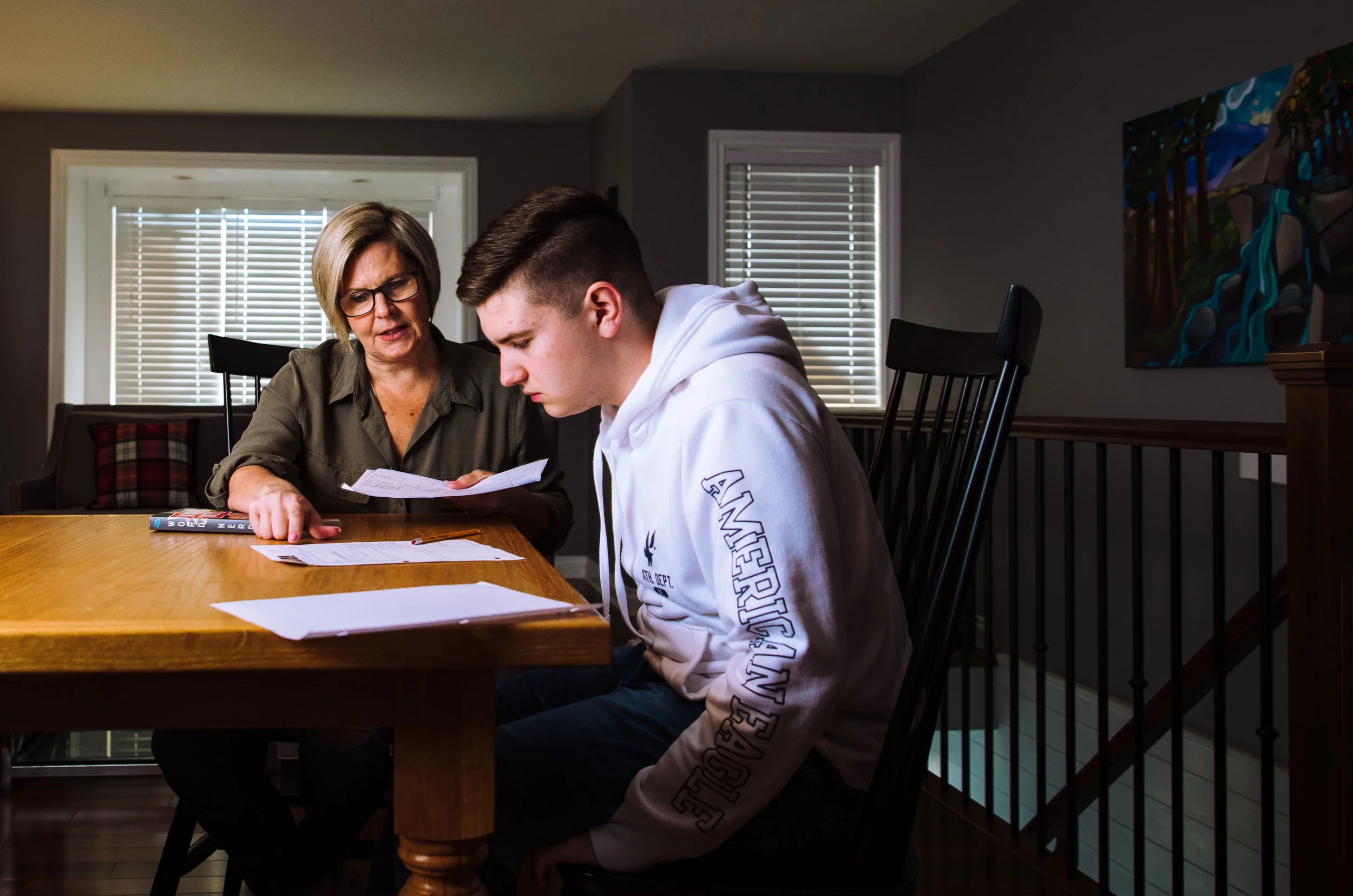Inclusive Investing and Financial Literacy
Guest Post: By Valerie Le Blanc, Staff Lawyer, Canadian Centre for Elder Law
Inclusive Investing
November is Financial Literacy Month and October is Registered Disability Savings Plan (RDSP) Month. Many of the financial institutions, investment regulators, community and other organizations committed to supporting financial literacy are publishing resources, tools, information and workshops to help people learn more about how to manage and save their money.
There are many great resources available. But it can sometimes be difficult or overwhelming to know where to look to find the information. It may be hard to know where to start, or to know what information will be useful. Everyone has different needs when it comes to learning more about the topic of money and saving.
The purpose of this article is to provide you with some information and links to resources that can help get you started. This article is divided into six sections
- Backgrounder: A Research Project by Canadian Centre for Elder Law
- Registered Disability Savings Plan (RDSP)
- The RDSP and the Disability Tax Credit (DTC)
- The RDSP and Government Grants and Bonds
- RDSPs and Endowment 150 Program
- RDSPs and Investing
1. Backgrounder: A Research Project Canadian Centre for Elder Law
The Canadian Centre for Elder Law (CCEL) is examining how people make investment decisions with support from family, loved ones and people they trust. These investors include adults who identify as living with a disability, and adults with Alzheimer’s or other forms of dementia. The project hopes to identify what can be done to help members of these communities to participate meaningfully in their investment decisions with supported decision making.
The project explores the practice of supported decision making both formally, through written agreements, and informally in British Columbia and Ontario. The project is supported by a volunteer committee who represents members from these communities, lawyers, community agencies and advocates, investment advisors and financial planners, and the investment regulators. We are pleased to have Karla Verschoor, Executive Director of Inclusion BC and Robert Lattanzio, Executive Director of ARCH Disability Law Centre, as members of our project committee.
Research for the project includes one-on-one and group interviews with people who have lived experience, knowledge and expertise in this area. The project report will identify ideas and opportunities for how to enhance the use of supported decision making in the investment context.
The project is funded by the Law Foundation of Ontario’s Access to Justice Fund.
For more information: Inclusive Investing: Respecting the Rights of Vulnerable Investors through Supported Decision Making.
2. Registered Disability Savings Plan (RDSP)
First introduced in Canada in December 2008, the Registered Disability Savings Plan (RDSP) is a federal tax-deferred, long-term savings plan for people who identify as living with a disability and their families. The purpose of the RDSP is to help with planning for future financial security. With a RDSP, people gain access to up to $90,000 in federal grants and bonds. People who have a RDSP can also still receive their provincial disability benefits. RDSPs are registered by the Government of Canada, and savings in an RDSP grows tax-free until the beneficiary makes withdrawals.
In British Columbia, both money held in an RDSP (asset) and money taken out of an RDSP (income) are fully exempt from determining eligibility for disability benefits.
Here is a list of banks and other financial institutions that offer the RDSP in Canada.
More information about the RDSP can be found at these links:
- Government of Canada Webpage: Opening an RDSP
- PLAN Institute Step-by-Step Guide to Becoming Eligible, Opening and Managing Your RDSP (2016)
- Government of British Columbia: Assets & Exemptions
3. The RDSP and the Disability Tax Credit (DTC)
To open an RDSP, you first must be eligible to receive the Canada Disability Tax Credit (DTC). The DTC is a federal income tax credit for people with disabilities and their supporters. You can claim the DTC when you file your income taxes. The DTC helps to lower the amount of income tax you have to pay. Once you qualify for the DTC, you can be eligible to open an RDSP.
Access RDSP is a program in British Columbia, developed through a partnership between Plan Institute, the BC Aboriginal Network on Disability Society, and Disability Alliance BC to assist clients in accessing both the DTC and the RDSP. Access RDSP free services include RDSP information sessions, one-to-one support with the DTC, a toll-free RDSP & disability planning hotline, and RDSP navigation for Indigenous people.
In Spring 2019, the federal government proposed two important changes to the RDSP in its Budget 2019. The first is to eliminate the requirement to close an RDSP when a beneficiary no longer qualifies for the DTC. This would allow grants and bonds otherwise required to be repaid to the Government to remain in the RDSP. The second proposal is to exempt RDSPs from seizure in bankruptcy, with the exception of contributions made in the 12 months before the filing.
- Government of Canada, Disability Tax Credit: Find out if you qualify for DTC
- Disability Tax Credit Application Form: Complete this application to apply for the DTC
- DTC Step-by-step Instructions: Detailed instructions to complete the form
- TurboTax Canada Disability Tax Credit Guide: A guide to completing the form
- RDSP Supports and Services: More information about Access RDSPs services
4. The RDSP and Government Grants and Bonds
When you open an RDSP, you may be eligible to receive federal government contributions to your RDSP through two programs:
- The Canada Disability Savings Grant; and
- The Canada Disability Savings Bond.
The Government of British Columbia website sets out some things to consider for building your RDSP savings
- Federal Grants and Bonds: These are based on your “family income.” If you are a single adult, this means your income. If you are married or in a common-law relationship, “family income” means the combined income of you and your spouse or common-law partner
Bonds: A full bond ($1,000 per year) is available if your family income is $30,450 or less. A partial bond is available if your family income is between $30,450 and $46,605
Grants: If your family income is $93,208 or less, you may get matching grants of 300% and 200% (depending on the amount you deposit into your RDSP). If your family income is more than $93,208, then a matching grant of 100% (on first $1,000 per year) is available
- Think about where you might get money from to invest in your RDSP (such as from your disability payment, gifts from friends, family, etc.). Figure out how much you can contribute each month. You may be able to get $150 from the Endowment 150 Fund
- Learn about ways you can save your money in the RDSP. An advisor at your bank or credit union can help you choose the type of investment that is right for you.
More information about the RDSP and government grants and bonds can be found at these links:
- Government of British Columbia: How to Start and Manage a Registered Disability Savings Plan in British Columbia
- Government of Canada: Canada Disability Savings Grant and Canada Disability Savings Bond
- Disability Alliance BC: The RDSP and People Receiving Social Assistance (2015)
5. RDSPs and Endowment 150 Program
As part of the Access RDSP program, Plan Institute is distributing a one-time $150 grant to help low-income British Columbians to start growing their RDSP. The Endowment 150 Program is made possible by the support of the Vancouver Foundation.
According to the Plan Institute’s website, the Endowment 150 grant is available to individuals and families with low-incomes who are residents of BC, and who have an RDSP.
For more information see the Endowment 150 Program.
6. RDSPs and Investing
Once you have an RDSP, there are many different options for how to save and grow your money in the RDSP.
The BC Securities Commission developed a program called InvestRight, which provides information and educational videos on how to get started with investing, how to choose investments, the difference between saving and investing, what each investment can do, and things to consider when you’re meeting with a financial planner or investment advisor to help you manage your investments.
Below are some links for more information about investments for your RDSP:
- BC Securities Commission: InvestRight
- PLAN Institute: Choosing a Financial Institution, Future Planning Tool
- Prosper Canada: Future Planning Tips for People with Disabilities and Those Who Support Them


